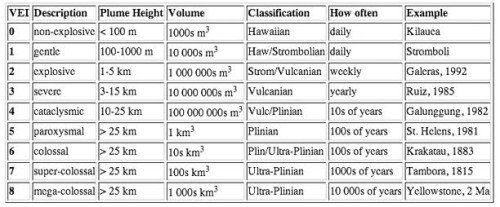On Monday, the Alaska Dispatch News reprinted a Washington Post story by Chris Mooney titled Renowned climate scientist projects rapid rise in sea level, more intense storms. The article discusses a research study Dr. James Hansen and 16 of his associates are about to release. That study predicts gloom and doom even if the UN is successful in controlling climate change. The study has yet to be peer reviewed but is given priority by the Washington Post because as the article states:
It’s an alarming picture of where the planet could be headed — and hard to ignore, given Hansen’s reputation.
Why is it hard to ignore? Why is gloom and doom by Dr. Hansen news? Dr. Hansen has been predicting gloom and doom since the 1980’s. He has been predicting rapid temperature rises and sea level mass destruction since 1982. His 1988 projections in front of Congress were wrong. This graph from a Skeptical Science article defending Hansen shows three Hansen predictions. Scenario A predicted changes with carbon dioxide near current levels:  According to Dr. Hansen, we should be quite a bit warmer. And I would argue that the black line drawn by Skeptical Science is a bit too aggressive. Most temperature models show a rapid rise from the 1992 cooling following the Mt. Pinatubo eruption, to the great El Nino of 1998. Worldwide temperatures since 1998 have been largely unchanged. The Skeptical Science graph makes it look like there is a persistent uptrend that really stopped in 1998.
According to Dr. Hansen, we should be quite a bit warmer. And I would argue that the black line drawn by Skeptical Science is a bit too aggressive. Most temperature models show a rapid rise from the 1992 cooling following the Mt. Pinatubo eruption, to the great El Nino of 1998. Worldwide temperatures since 1998 have been largely unchanged. The Skeptical Science graph makes it look like there is a persistent uptrend that really stopped in 1998.
Climate research sites UAH, and East Anglia University both show this. As Skeptical Science said in the article, Dr. Hansen’s models had a too high climate sensitivity. English translation…his predictions were wrong.
Dr. Hansen is not alone, most early models at the IPCC were wildly high in their predictions. Climate models have had to be modified to reflect the lack of warming since 1998. IPCC reports have been toning down the immediate impacts of carbon dioxide (and methane too), using natural climate variation as the reason.
They still think they are right, but natural climate variation appears to be masking the predicted results and their predictions might take a long time to materialize. Virtually every temperature based prediction made by the IPCC in the 2007 Climate Change Report was wrong. The IPCC has now modified their positions to reflect this reality. Not Dr. Hansen. Back in June of 1988, Dr Hansen is quoted in a New York Times article as saying the following to Congress:
that it was 99% certain that the warming trend was not a natural variation but was caused by a build up of carbon dioxide and other artificial gasses in the atmosphere.
And in 2007 he had not changed his view one iota as these quotes courtesy of the Steve Goreham website demonstrate:
“…99 percent confiden t that the world really was getting warmer and that there was a high degree of probability that it was due to human-made greenhouse gases.” —Dr. James Hansen on his 1988 Senate testimony, PBS Frontline, Apr. 24, 2007
Two years later he said:
“The climate is nearing tipping points. Changes are beginning to appear and there is a potential for explosive changes, effects that would be irreversible, if we do not rapidly slow fossil-fuel emissions over the next few decades.” —Dr. James Hansen, The Observer, Feb. 15, 2009
“The greatest danger hanging over our children and grandchildren is initiation of changes that will be irreversible on any time scale that humans can imagine.” —Dr. James Hansen, The Observer, Feb. 15, 2009
“Burning all the fossil fuels will destroy the planet we know, Creation, the planet of stable climate in which civilization developed.” —Dr. James Hansen, letter to Barack and Michelle Obama, Dec. 29, 2008
Back in 1988, we knew much less than we do now and Dr. Hansen was 99% sure he was right. How could anyone be that sure then or now? Even the UN is only 90% sure that most warming seen since 1950 is man caused. Some could be natural climate variation. This is one extraordinarily difficult science discussion. A rational person should have more doubt.
Now, Dr. Hansen believes even a modest rise in temperature of less than a degree C will be catastrophic. I have doubts. Dr. Hansen is so prejudiced in his view, I doubt he can produce a document that does not display his almost religious zeal on the subject.
Interestingly, the Washington Post decided to use Michael Mann as their independent scientist to discuss this controversial paper presented by Dr. Hansen. Mann would not have been my first choice.
Back in 1998, Dr. Mann produced a paper predicting rapid climate change. It was the rage of the Climate Community for years. Al Gore used the Hockey Stick Graph as it was called in his film. In 2005 the study was successfully challenged by Canadian mathematicians. Dr. Mann has been at the center of a climate fire storm for some 10 years now.
Hansen and Mann share a common problem. Both made wild predictions in the distant past and must either defend them or admit mistakes. Neither has been willing to admit errors, and errors were made. Some times I don’t understand journalistic choices. I cannot think of any duo more shrouded in controversy in Climate Science than Dr. Hansen and Dr. Mann.
All this begs a question – Why did Mr. Mooney give Dr. Hansen such stature and why did he use Dr. Mann as a source confirming the story?


























